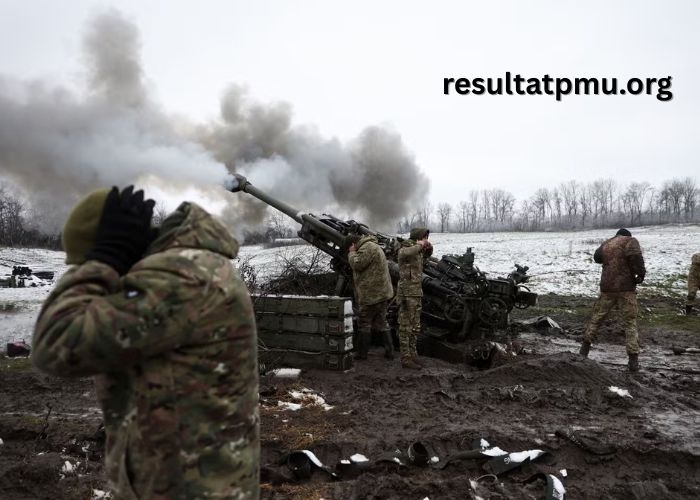The conflict in Ukraine, often referred to as “Guerre en Ukraine” or the “War in Ukraine,” has been a pivotal geopolitical event with far-reaching implications. Since its inception, the war has drawn significant international attention due to its profound impact on regional stability, global politics, and humanitarian concerns. This article provides an in-depth analysis of the conflict, exploring its origins, key developments, current status, and potential future scenarios.
Origins and Historical Context
The roots of the War in Ukraine can be traced back to a complex tapestry of historical, political, and cultural factors. Ukraine, situated at the crossroads of Eastern Europe, has long been a region of strategic significance. Its history of shifting borders, cultural influences, and political affiliations has shaped its contemporary conflicts.
The post-Soviet era marked a period of intense transformation for Ukraine. Gaining independence from the Soviet Union in 1991, Ukraine navigated its path as a newly sovereign state, striving to establish its identity and international standing. However, the legacy of Soviet influence, coupled with regional disputes and economic challenges, created a fertile ground for conflict.
A significant turning point came in 2014 with the Euromaidan protests. Ukrainians demonstrated in Kyiv’s Maidan Nezalezhnosti (Independence Square) demanding closer ties with the European Union and greater democratic reforms. The protests, known as the Revolution of Dignity, led to the ousting of President Viktor Yanukovych, whose pro-Russian stance had fueled dissent.
In the aftermath, the political landscape in Ukraine became increasingly polarized. The new government, leaning towards pro-Western policies, faced opposition from Russia. The annexation of Crimea by Russia in March 2014 and the subsequent conflict in Eastern Ukraine marked the beginning of a prolonged and violent confrontation.
Key Developments in the Conflict
The conflict in Ukraine has evolved through several distinct phases, each marked by significant developments and shifts in dynamics. Understanding these phases is crucial for grasping the current situation and the ongoing complexities.
Annexation of Crimea and Early Stages of Conflict
In February 2014, Russia initiated a series of actions that culminated in the annexation of Crimea. Utilizing a combination of political pressure, military force, and a controversial referendum, Russia established control over the Crimean Peninsula. This move was met with widespread international condemnation and led to the imposition of economic sanctions against Russia.
The annexation of Crimea was followed by unrest in Eastern Ukraine. Pro-Russian separatists in the Donetsk and Luhansk regions declared independence, leading to violent clashes with Ukrainian government forces. The early stages of the conflict saw intense fighting and significant casualties on both sides.
Minsk Agreements and Ceasefires
In an effort to de-escalate the conflict, international diplomatic initiatives were undertaken, resulting in the Minsk Agreements. The first agreement, known as Minsk I, was signed in September 2014, followed by a second agreement, Minsk II, in February 2015. These agreements aimed to establish a ceasefire, outline a framework for peace, and address issues such as autonomy for the contested regions and the withdrawal of heavy weapons.
Despite the agreements, sporadic violence continued, and the conflict remained unresolved. The Minsk Agreements provided a framework for negotiations but faced challenges in implementation. Both sides accused each other of violating the terms, and progress towards a comprehensive peace settlement was slow.
Escalation and Continued Conflict
The conflict saw periods of escalation and relative calm. In 2017 and 2018, fighting intensified in certain areas, with significant military confrontations and casualties. The conflict became entrenched, with both sides fortifying their positions and engaging in a protracted war of attrition.
The humanitarian impact of the conflict has been severe. Millions of people have been displaced, and the regions affected by the fighting have experienced widespread destruction and economic hardship. The international community has provided humanitarian assistance and support, but the scale of the crisis has posed significant challenges.
Recent Developments and Ongoing Dynamics
As of 2024, the conflict remains unresolved, with ongoing military engagements and diplomatic efforts. The situation on the ground is fluid, with periodic escalations and attempts at negotiation. The international community continues to monitor the conflict, with various countries and organizations involved in efforts to mediate and provide assistance.
Key developments in recent years include shifts in military strategy, changes in political leadership, and evolving geopolitical dynamics. The conflict has become a focal point in broader international relations, with implications for global security and stability.
Humanitarian Impact and International Response
The humanitarian impact of the War in Ukraine has been profound and far-reaching. The conflict has caused significant civilian suffering, displacement, and economic disruption. Understanding the humanitarian dimensions of the conflict is essential for assessing its broader impact and the response of the international community.
Displacement and Refugee Crisis
The conflict has resulted in one of the largest displacement crises in recent history. Millions of people have been forced to flee their homes due to violence and insecurity. Internally displaced persons (IDPs) within Ukraine and refugees seeking asylum in neighboring countries have faced numerous challenges, including access to basic services, safety, and stability.
The international community, including organizations such as the United Nations High Commissioner for Refugees (UNHCR), has provided support to address the needs of displaced populations. Efforts include humanitarian aid, shelter, and assistance with resettlement and integration.
Economic and Infrastructure Damage
The war has caused extensive damage to infrastructure and economic systems in the affected regions. The destruction of homes, schools, hospitals, and other critical facilities has had a severe impact on daily life and access to essential services. The economic repercussions include disruptions to local economies, loss of livelihoods, and long-term challenges for reconstruction and recovery.
International organizations and donor countries have provided financial assistance for reconstruction and development efforts. However, the scale of the damage presents significant challenges for achieving long-term recovery and rebuilding.
Diplomatic and Humanitarian Efforts
The international community has been actively involved in diplomatic and humanitarian efforts to address the crisis. Negotiations, peacekeeping missions, and humanitarian assistance programs have been part of the response. Various countries and organizations have played roles in mediating between the parties, providing aid, and advocating for a peaceful resolution.
The complexity of the conflict and the differing interests of international actors have influenced the effectiveness of these efforts. The ongoing nature of the conflict presents challenges for achieving a lasting and comprehensive resolution.
Geopolitical Implications and International Relations
The War in Ukraine has significant geopolitical implications, affecting international relations and regional stability. Understanding these implications is crucial for grasping the broader context of the conflict and its impact on global politics.
Tensions Between Russia and Western Nations
The conflict has intensified tensions between Russia and Western nations, particularly those in the European Union and NATO. The annexation of Crimea and support for separatist movements in Eastern Ukraine have been viewed as violations of international norms and sovereignty.
Sanctions imposed by Western countries on Russia have had economic and diplomatic repercussions. The strained relations between Russia and Western nations have influenced global security dynamics and international alliances.
Impact on Regional Stability
The conflict has had a profound impact on regional stability in Eastern Europe. The ongoing hostilities have affected neighboring countries, including Belarus, Poland, and Hungary. The security situation and political dynamics in these countries have been influenced by the conflict in Ukraine.
Regional stability is also linked to broader geopolitical considerations, including energy security, trade relations, and military alliances. The conflict has highlighted the complexities of regional politics and the interconnectedness of global issues.
Role of International Organizations
International organizations, such as the United Nations, the Organization for Security and Co-operation in Europe (OSCE), and the European Union, have played roles in addressing the conflict. Their involvement includes diplomatic mediation, monitoring, and humanitarian assistance.
The effectiveness of these organizations in resolving the conflict and addressing its consequences is influenced by the political landscape and the interests of member states. The role of international organizations continues to be a key factor in efforts to achieve peace and stability.
Future Scenarios and Potential Resolutions
The future of the War in Ukraine remains uncertain, with various scenarios and potential resolutions being considered. Analyzing these scenarios provides insight into possible outcomes and the factors that may influence the trajectory of the conflict.
Diplomatic Solutions and Peace Negotiations
Diplomatic solutions and peace negotiations remain central to the search for a resolution. The Minsk Agreements and other diplomatic efforts have aimed to address the underlying issues and establish a framework for peace. Continued negotiations, mediated by international actors, may offer opportunities for a comprehensive settlement.
Challenges to achieving peace include political obstacles, differing objectives of the parties involved, and ongoing violence. However, sustained diplomatic engagement and international pressure may contribute to progress toward a resolution.
Continued Conflict and Protracted Stalemate
The conflict may continue with periodic escalations and periods of relative calm. A protracted stalemate could result in ongoing violence and instability, with limited progress toward a comprehensive settlement. The humanitarian impact and economic consequences would persist, affecting the lives of millions.
Continued conflict may also lead to shifts in military strategy, changes in political dynamics, and evolving international responses. The long-term implications of a protracted conflict could influence regional and global stability.
Potential for Regional and International Realignments
The conflict may lead to regional and international realignments, with changes in alliances, geopolitical strategies, and security arrangements. The evolving dynamics may influence the relationships between countries, organizations, and political entities.
Potential realignments could impact global security, trade relations, and diplomatic interactions. The broader geopolitical landscape may shift in response to the conflict and its consequences.
Conclusion
The War in Ukraine, or “Guerre en Ukraine,” represents a complex and multifaceted conflict with profound implications for regional stability, international relations, and humanitarian concerns. Understanding its origins, key developments, and ongoing dynamics is essential for grasping the broader context and potential outcomes.
The conflict has highlighted the challenges of resolving protracted disputes and the importance of diplomatic engagement, humanitarian assistance, and international cooperation. As the situation evolves, continued efforts to address the underlying issues and seek a comprehensive resolution will be critical for achieving lasting peace and stability.




